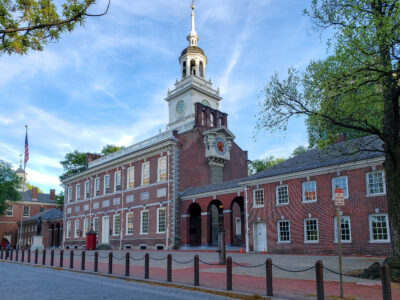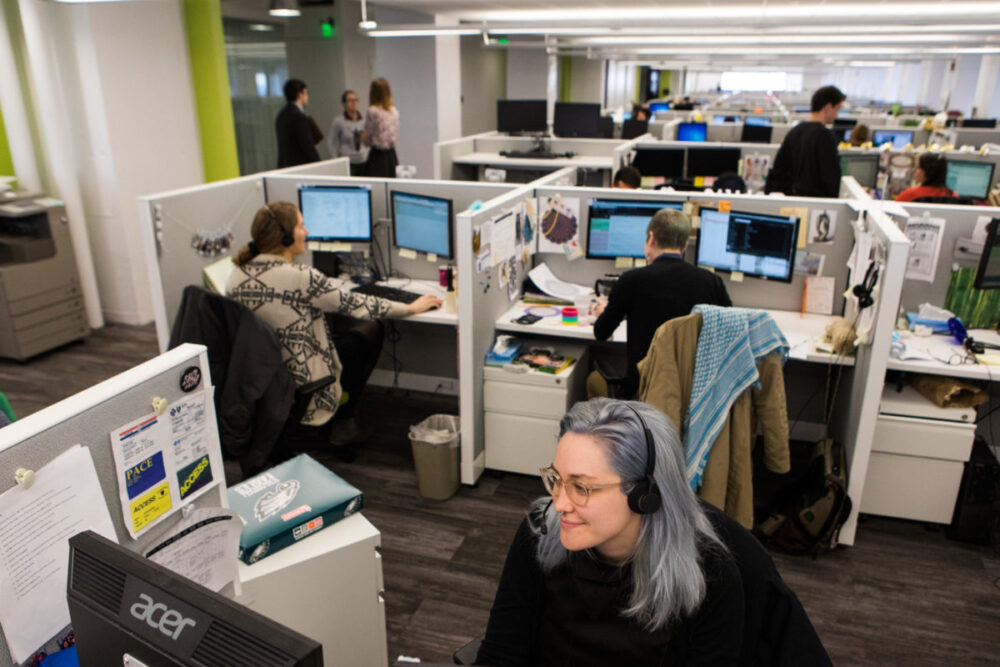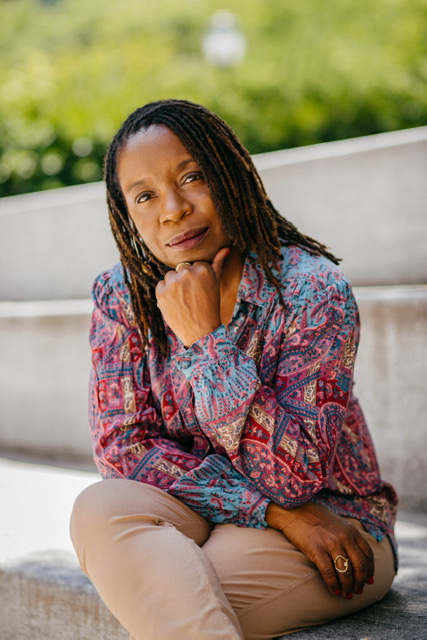Although the day was cloudy and Philadelphia was not in the path of totality, low-vision residents said the the recent total solar eclipse was just as meaningful for them. Using a tablet-sized device called LightSound, they enjoyed the eclipse via sonification, which provided an immersive experience from a nonvisual perspective.
Attendees at an eclipse viewing event in Northern Liberties listened to the flute indicating the brightest moment, a clarinet denoting a dimmer light and the low tone clicking sound which represented darkness.
“I’m not normally wistful about being blind but had recently been thinking about how nice it would be to see [the eclipse],” Katie Stevens told Technical.ly. After the LightSound event, “I felt like even though I couldn’t see it, I could still experience it.”
Created by a Harvard University team of astronomers led by Allyson Bieryla, LightSound takes variations of light and converts that data into numbers. It then assigns those numbers to musical instruments through a mini synthesizer to turn the eclipse into a symphony.
The device helped attendees use their other senses, such as hearing and touch, to fully understand what an eclipse is like, said Simon Bonenfant, another member of the Northern Liberties viewing/listening party in early April.
This is something I will never forgetWilhelmina Young LightSound eclipse participant
LightSound also hosted a virtual event to experience the eclipse. The American Council of the Blind partnered with the Harvard University Astronomy Department to host a live LightSound broadcast of the eclipse via Zoom. More than 2,500 listeners tuned in the broadcast that streamed eclipse views from Texas, New York, Arkansas and Indiana.
“This is something I will never forget,” said virtual attendee Wilhelmina Young. “People were having the same reactions as me, like someone said he got a chill up his spine, which is exactly what I was thinking!”
Eye health, however, still remained front-of-mind for all eclipse watchers, no matter their level of visual ability. As a precaution, all viewers still wore the protective eclipse eyewear.
“Individuals with visual impairment are still subject to damage if looking at the eclipse without sunglasses,” said Erin Kenny of the Eye Institute of Pennsylvania. “The tissue in the back of the eye, the retina, is extremely sensitive to light. So whether the retina is functionally normally or atypically due to an eye disorder, it should be protected.”
Scaling up for a blockbuster eclipse watching
LightSound began in 2017 when Bieryla was planning a trip for her senior students to view the total eclipse in Wyoming.
It was also then that she met Wanda Díaz-Merced, a blind astronomer who uses sonification to interpret her data. Díaz-Merced asked how Bieryla had planned to make the trip accessible, and the idea for LightSound was born.
The team made three prototypes of LightSound for separate locations including a school for the blind in Kentucky. They ramped up production to 100 devices for the 2020 eclipse in South America. When Bieryla and her colleagues transitioned to manufacturing the devices with printed circuit boards, production time went from a few hours per device to just minutes, Bieryla said.
There were 900 LightSound devices available for the 2024 eclipse, which Bieryla said has a much-improved light sensor and sound quality from its original prototype.
Individuals and institutions could request a LightSound, delivered at no cost. Bieryla said they received over 2,500 requests even without much effort: “It was really a lot of word of mouth.” The Simons Foundation, which funds math and science initiatives, connected the Harvard team with schools for the blind, which increased the demand.
Proactive accessibility and enjoyable experiences
Allowing people with low vision to experience the eclipse in community, whether in-person or virtual, was just one of the goals of the LightSound Project.
The organization also aimed to make this event pleasant to the ear. One astronomer on the team is also a trained musician, and helped LightSound use musical instruments that made the eclipse experience “like listening to a concert,” said Young, the virtual attendee who felt a chill up her spine.
Attendee Peter Pham had viewed the 2017 eclipse in Colorado, but his vision was stronger then. For him, this year’s eclipse became an auditory experience. Yet it was no less engaging, he said: “I liked that I didn’t have to rely on my vision and noticing other things like the temperature dropping.”
Bieryla and the team continue to collect feedback and data to further perfect the device for the next eclipse. For example, a prototype device called Orchestar helps astronomers better understand temperature, color and light wavelengths.
LightSound primarily aims for greater accessibility for a broad audience. Accessible resources benefit everyone, and anyone can use the technology to interpret data in new ways. As an instructor, Bieryla said she has always taken a proactive approach to accessibility in its broadest terms, whether physical or visual.
“We don’t want to wait,” Bieryla said, “until we have a student that we’re not prepared to accommodate.”
Updated at 8:45 p.m.
Join the conversation!
Find news, events, jobs and people who share your interests on Technical.ly's open community Slack

Why is it so hard to find entry-level software engineering jobs?

What US entrepreneurs can learn from a Chinese policy wonk: Build with your values in mind

Philly Power Moves: Penn bets on AI with its first vice dean dedicated to the tech



